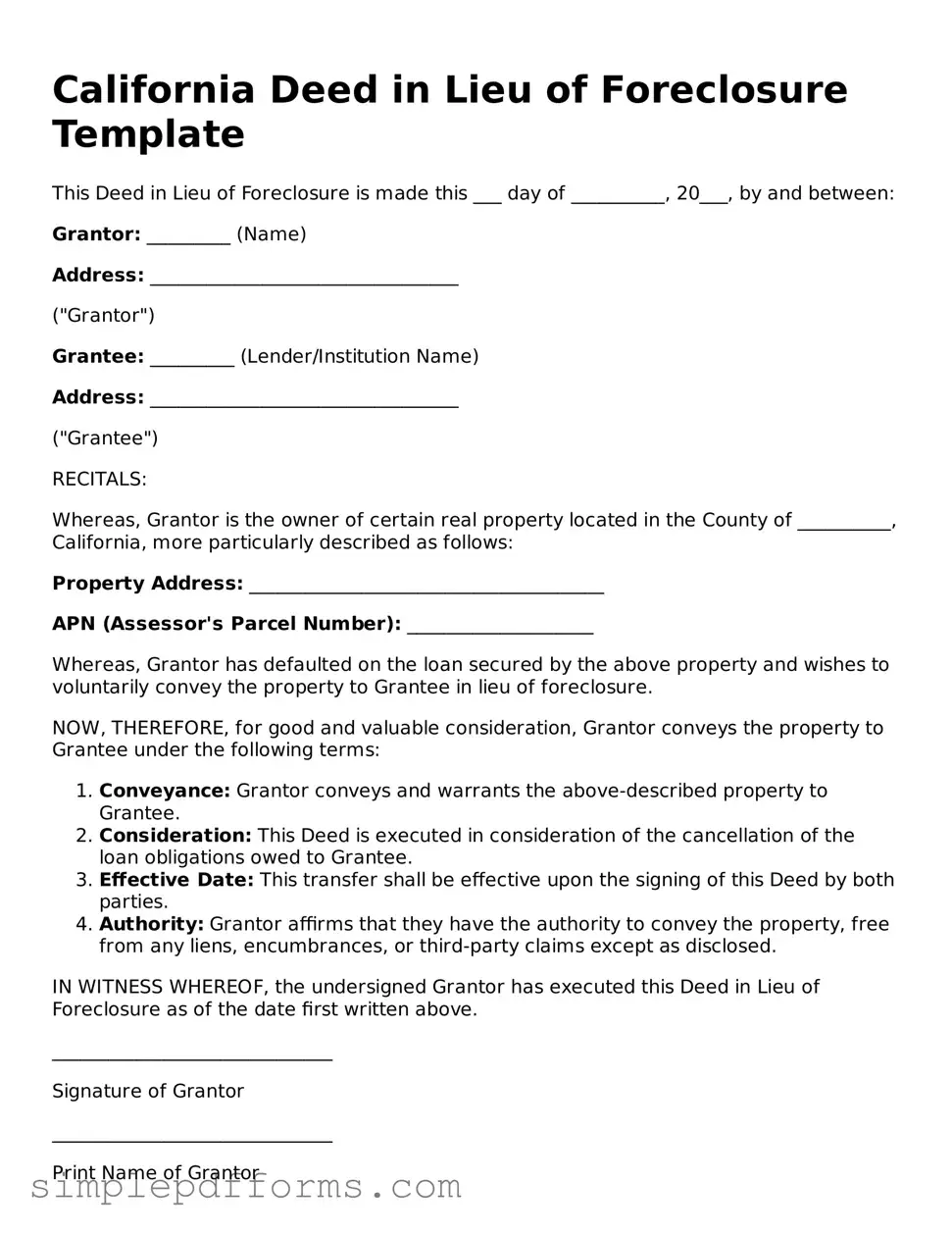California Grant Deed
This Grant Deed is made this ____ day of __________, 20__, by and between:
Grantor: ____________________________________ (Name of Grantor)
Address: ________________________________________________ (Address of Grantor)
Grantee: ____________________________________ (Name of Grantee)
Address: ________________________________________________ (Address of Grantee)
For the nominal consideration of $__________, the Grantor hereby grants to the Grantee the following described real property in the County of __________, State of California:
Legal Description of Property: ________________________________________________ (Insert legal description here)
This deed is executed with the intention of conveying the above-described property. The Grantor warrants title to said property against all claims and demands.
In witness whereof, the Grantor has executed this Grant Deed as of the day and year first above written.
Grantor's Signature: ___________________________
Print Name: ________________________________________
State of California, County of ________________
On this ____ day of __________, 20__, before me, ______________________ (Name of Notary Public), a Notary Public in and for said State, personally appeared ___________________________ (name of Grantor), who proved to me on the basis of satisfactory evidence to be the person whose name is subscribed to the within instrument and acknowledged to me that he/she executed the same in his/her authorized capacity, and that by his/her signature on the instrument the person, or the entity upon behalf of which the person acted, executed the instrument.
WITNESS my hand and official seal.
Signature of Notary: _______________________________
(Seal)
My Commission Expires: _____________________________
